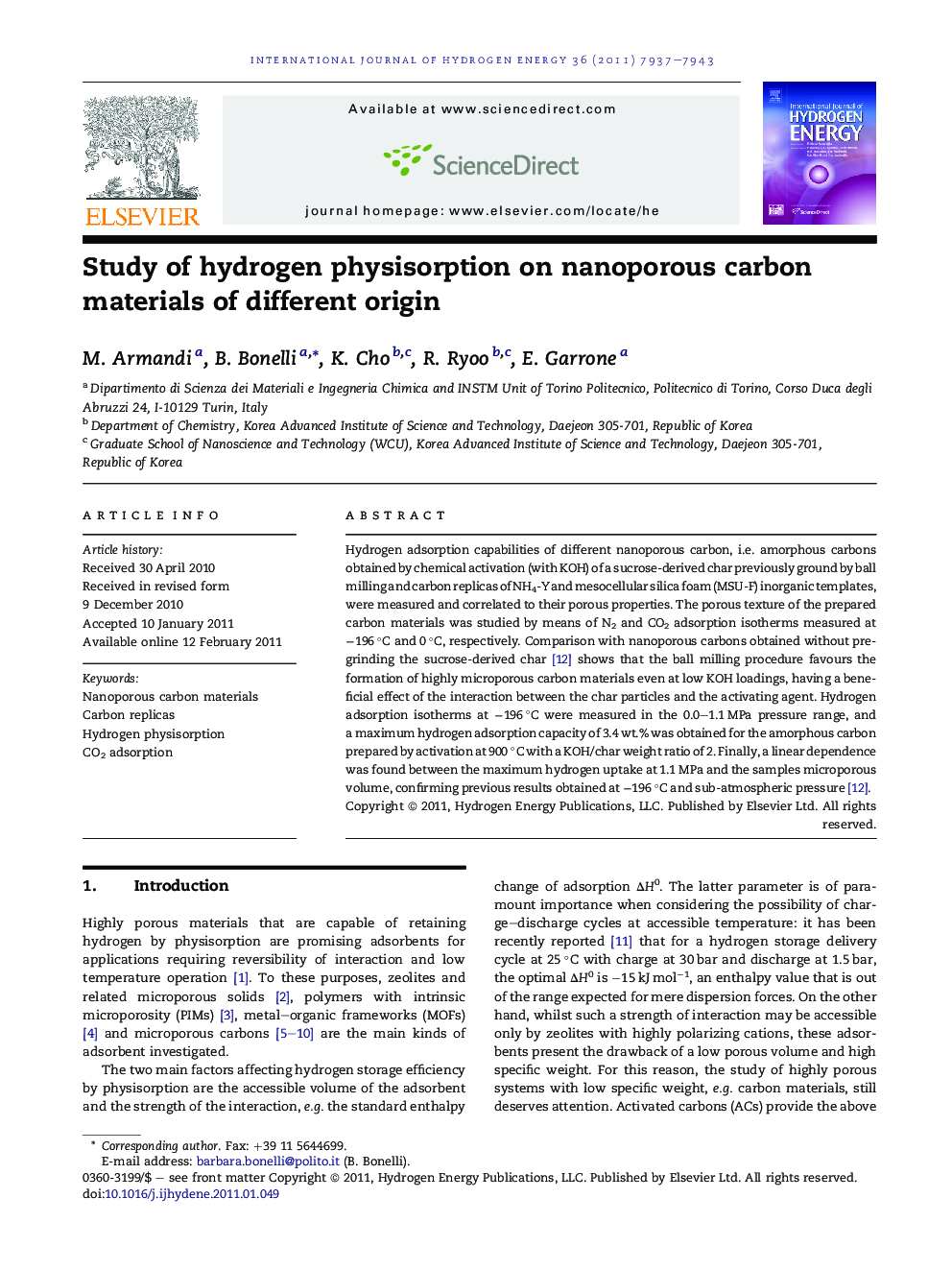| Article ID | Journal | Published Year | Pages | File Type |
|---|---|---|---|---|
| 1279333 | International Journal of Hydrogen Energy | 2011 | 7 Pages |
Hydrogen adsorption capabilities of different nanoporous carbon, i.e. amorphous carbons obtained by chemical activation (with KOH) of a sucrose-derived char previously ground by ball milling and carbon replicas of NH4-Y and mesocellular silica foam (MSU-F) inorganic templates, were measured and correlated to their porous properties. The porous texture of the prepared carbon materials was studied by means of N2 and CO2 adsorption isotherms measured at −196 °C and 0 °C, respectively. Comparison with nanoporous carbons obtained without pre-grinding the sucrose-derived char [12] shows that the ball milling procedure favours the formation of highly microporous carbon materials even at low KOH loadings, having a beneficial effect of the interaction between the char particles and the activating agent. Hydrogen adsorption isotherms at −196 °C were measured in the 0.0–1.1 MPa pressure range, and a maximum hydrogen adsorption capacity of 3.4 wt.% was obtained for the amorphous carbon prepared by activation at 900 °C with a KOH/char weight ratio of 2. Finally, a linear dependence was found between the maximum hydrogen uptake at 1.1 MPa and the samples microporous volume, confirming previous results obtained at −196 °C and sub-atmospheric pressure [12].
